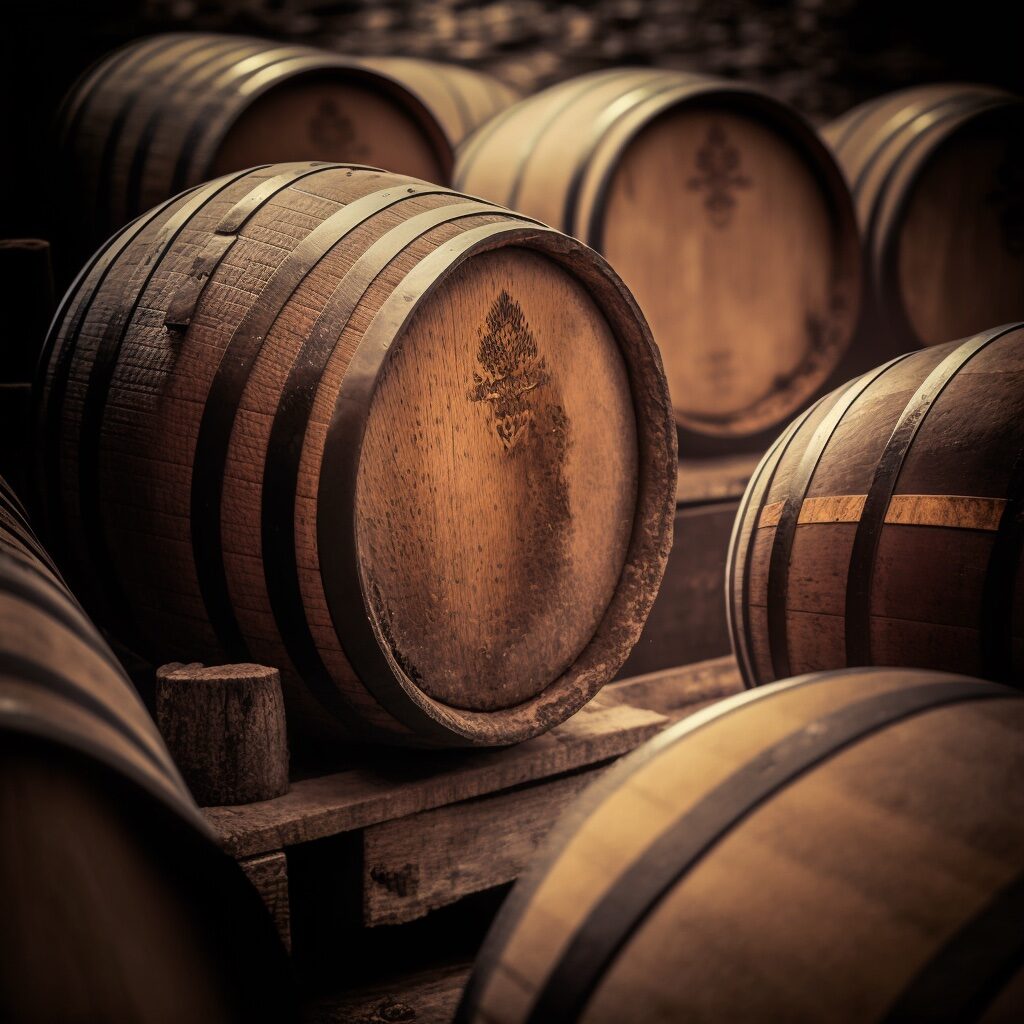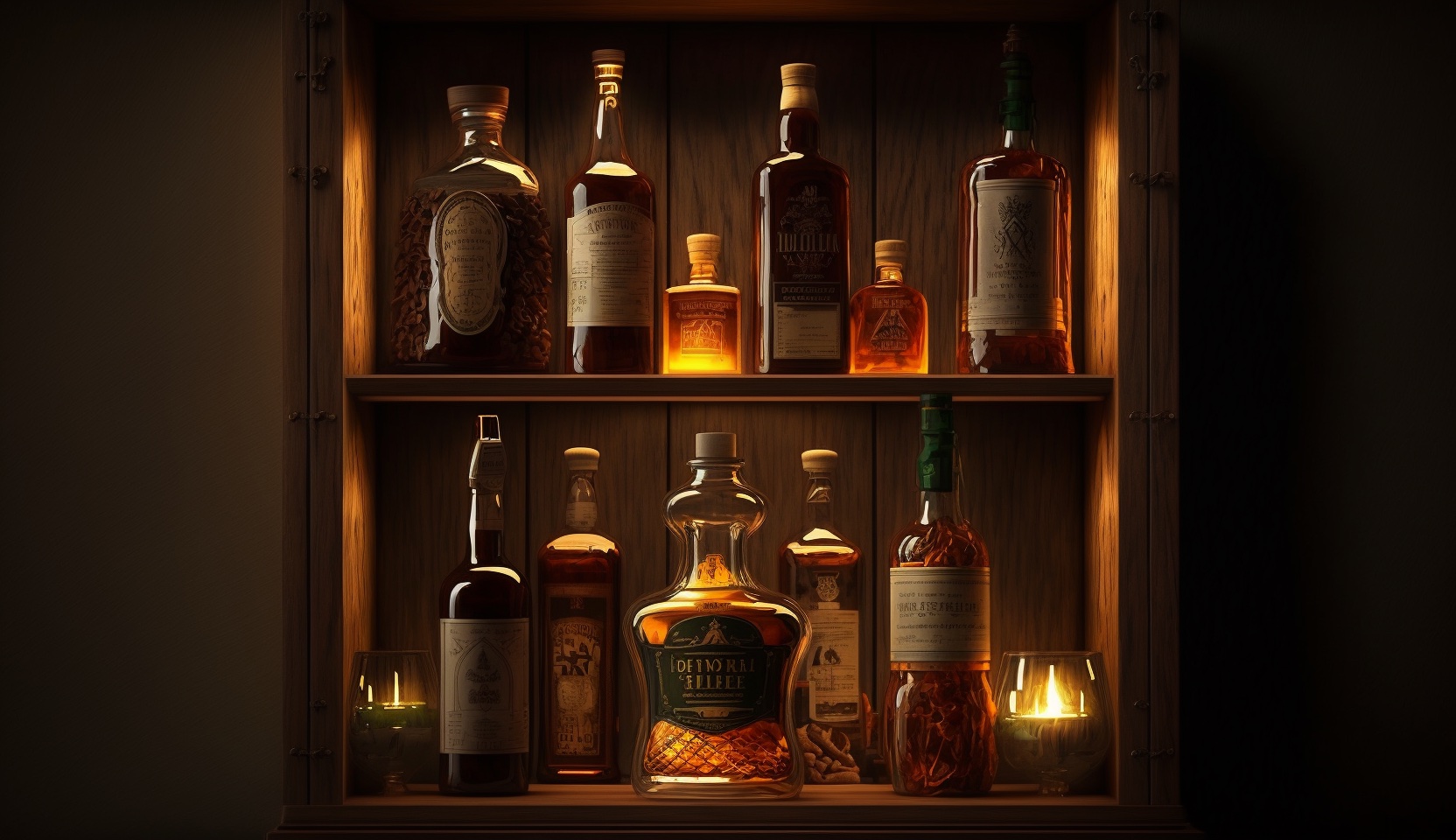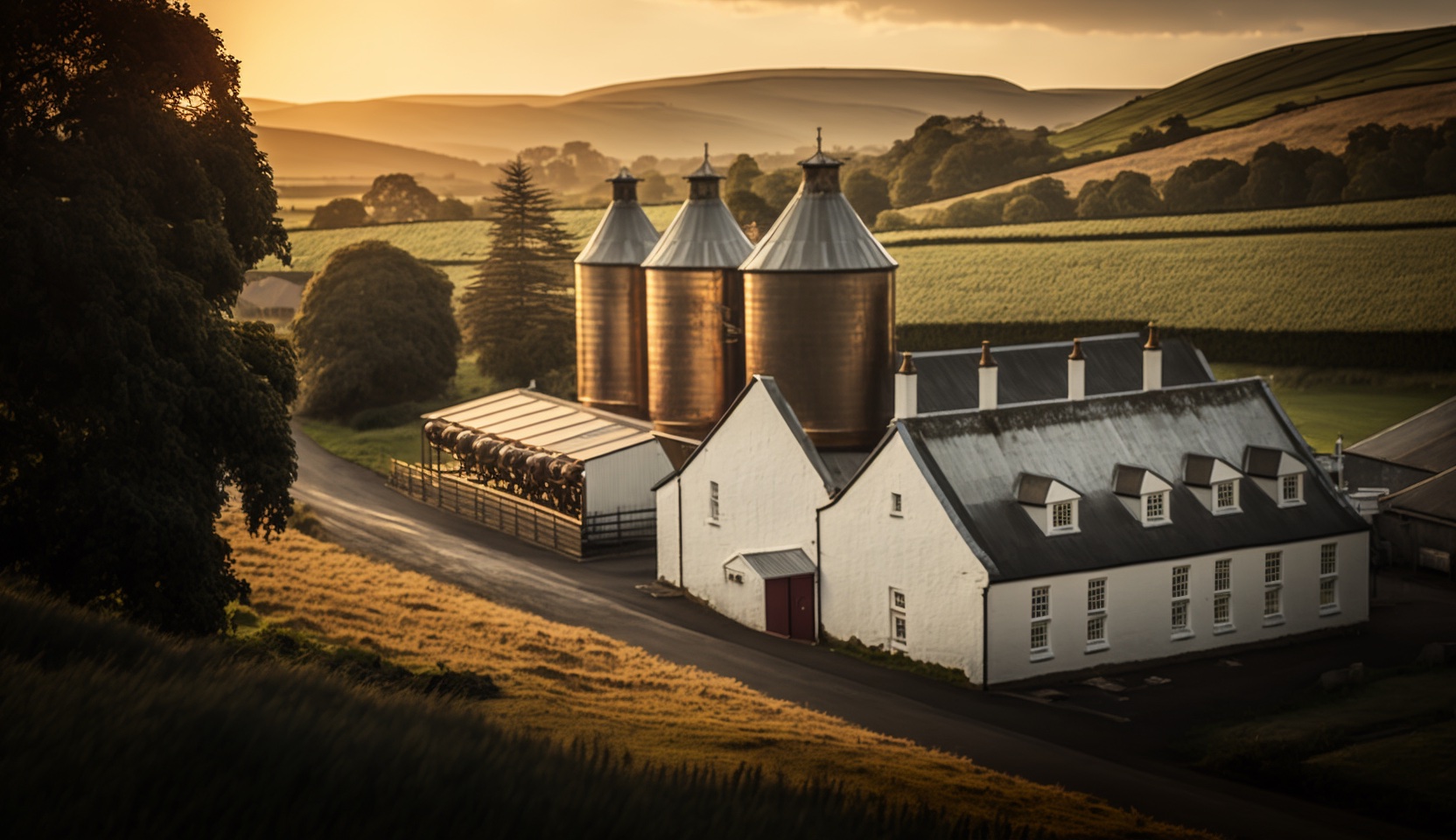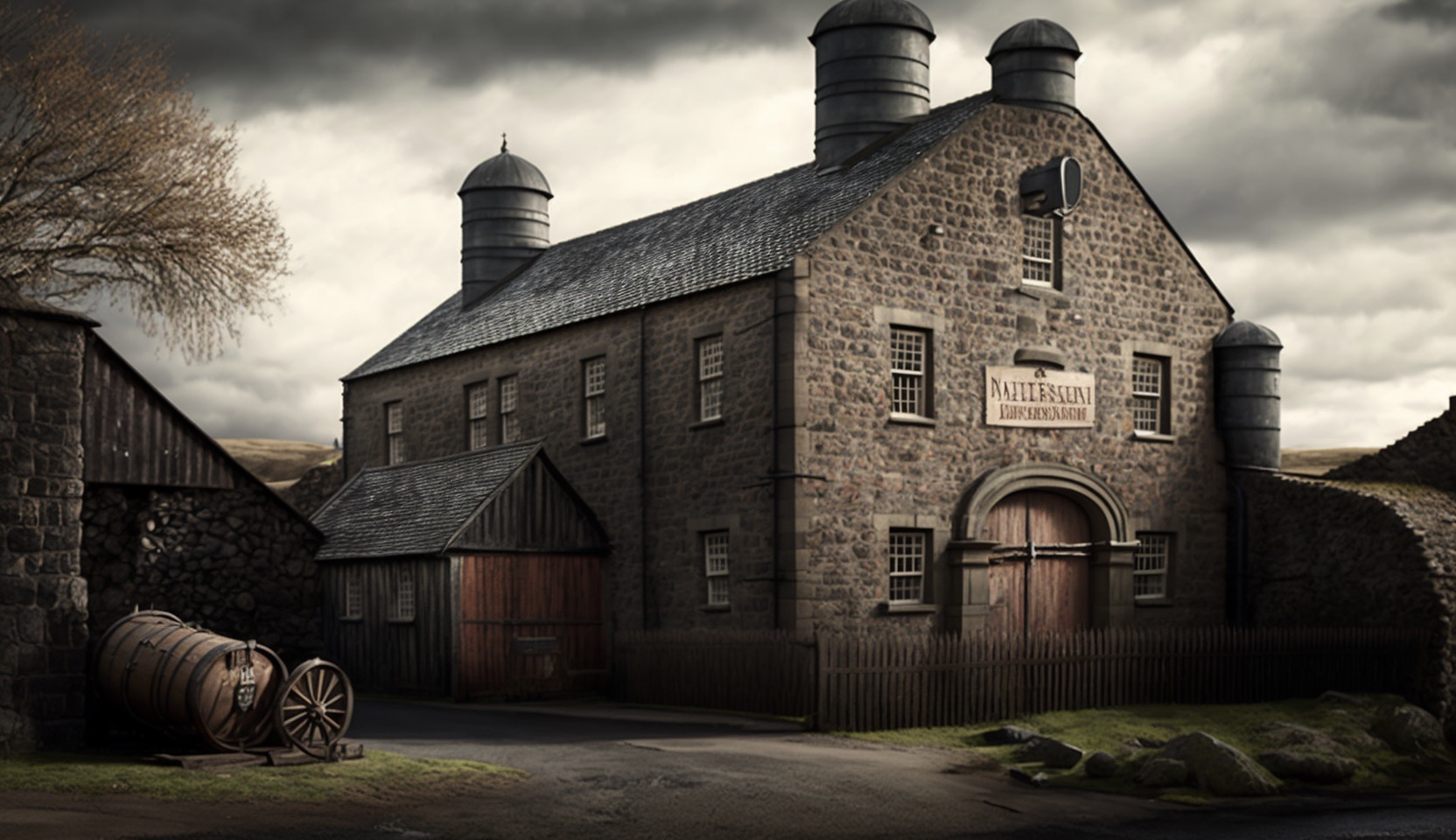The Art Of Whisky Maturation
Whisky maturation is an art form; one that has been honed and perfected over centuries. It’s a process of balancing the influences of time, barrels and flavour to create something truly unique. But just what are these elements, and how do they contribute to the final product?
In this article we will explore ‘the art of whisky maturation’: examining the role age and barrels play in determining a whisky’s flavour profile. We’ll look at the science behind ageing spirits, as well as uncovering some tips for those looking to up their home-brewing game.
So if you’re curious about whisky maturation or want to learn more about crafting your own spirit creations, grab yourself a dram and get comfortable – it’s time to discover all there is to know about the art of whisky making!
Types Of Whisky Aging
Whisky ageing is a complex process that can take years to achieve the desired flavour. There are two main types of whisky maturation – oxidative and reductive.
Oxidative ageing occurs when oxygen enters the barrel and interacts with wood molecules, allowing for flavours such as vanilla and honey to develop in the whisky.
Reductive ageing happens when sulphur compounds interact with alcohols inside the cask, leading to maltiness and smokier notes. The length of time spent maturing also affects the taste; whiskies aged for longer will be smoother, more balanced, and have deeper flavours than those matured for shorter periods.
The role of oak barrels plays an important part in whisky maturation; it’s where all the magic happens! Oak barrels provide tannins which add complexity and structure to whiskies while imparting spicy or sweet aromas into them. They also help protect whisky from oxidation during storage by creating an air-sealed environment within their walls. This means that your favourite bottle of whisky has been carefully crafted over many years to get just right – so you can enjoy its unique character each time you pour yourself a glass!
The Role Of Oak Barrels
The role of oak barrels in whisky maturation is paramount, for it’s the wooden staves that provide the spirit with so much of its flavour. During maturation, whisky interacts with these woody compounds to produce new and complex aromas and flavours. Oak barrels are prized for their ability to impart a unique character to whiskey; they’re also an excellent source of tannins, which give whiskey its signature smoothness.
It’s not just the wood itself that has an effect on whisky during maturation. The charring technique used on the inside of the barrel can alter the flavour profile as well, adding smoky notes or even sweet overtones like vanilla and coconut.
Charred barrels help create depth in flavour while allowing whiskies to retain natural sugars from grain mash fermentation. In addition, exposure to oxygen through tiny cracks in the cask helps soften harsh edges, smoothing out rough transitions and bringing balance to some more robust flavours.

The Impact Of Wood On Flavour
Once the oak barrel has been chosen, it’s time to consider how wood can influence whisky flavour. The array of flavours that oak barrels add is remarkable. From subtle aromas to bold characters, here are five ways in which wood impacts the taste of whisky:
- Oak contributes a range of unique flavours including vanilla and caramel with tones of coconut, cinnamon and other spices.
- Wood helps bring out fruit notes such as citrus or dark fruits like plums and cherries.
- It adds complexity by creating layers of different scents that blend together for an overall rounded flavour profile.
- Tannins from the wood give whisky a more structured mouthfeel and dry finish.
- Aging in wood also softens harsher alcohols into more mellow spirits.
These elements all have their own part to play in the creation of whiskey’s complex flavour profiles; however, maturation processes determine the final outcome – both in terms of taste and character.
Maturation Processes
Whisky maturation is a complex process that creates unique and delicious flavours. For whisky to be aged in barrels, it must first go through the three stages of maturation: fermentation, distillation, and maturing.
Fermentation begins when yeast is added to a mash of grains to create alcohol. Distillation follows as the fermented liquid is heated and cooled several times in order for the flavour molecules to separate from more volatile elements such as water and oils. Finally, once these two processes are complete, whisky enters its third stage – maturing – where it will begin its journey towards becoming an artisanal spirit.
To mature whisky effectively, there needs to be an environment with controlled temperature variations throughout the year which causes the wood particles within the barrel to expand and contract.
This constant expansion and contraction helps break down components like tannins, esters, lactones, fatty acids, phenols and other chemicals found in oak barrels allowing them to mix together creating new compounds that give whisky its unique flavour profiles.
Furthermore this chemical reaction also softens harshness making it smoother on our palate while providing sweet notes such as vanilla or caramel depending on what type of cask was used during maturation.
Ageing vs Maturing
Ageing and maturing are two distinct processes associated with whisky-making. Ageing is the process of storing a spirit in oak barrels over an extended period of time, usually years, while maturing is the act of allowing it to interact with the wood during that period. The difference between these two terms lies in the length of time they take place; ageing takes much longer than maturing.
When aged for a long enough time, whisky can develop intense flavour complexities. This occurs because as ageing progresses, more interactions occur between the liquid and cask walls – flavours from both being absorbed by each other over time. Maturation helps give whisky its unique character due to the introduction of aromas and flavour compounds from within the barrel itself such as vanillin and tannins. These components extract into the spirit creating subtle differences in taste depending on how much contact occurs between them. In this way, maturation contributes greatly to shaping the final product’s aroma and tastes profiles.
The effects of ageing and maturing on whisky production cannot be understated – without them, whisky would lack complexity or depth of flavour altogether. As we move forward into exploring further changes that occur during maturation, it’s important to understand how these processes affect our favourite spirits every step along their journey towards becoming complex works of art.
Taste Profile Changes During Maturation
Maturation of whisky is a complex process that can take years to achieve. As the spirit ages, its taste profile evolves as various chemical reactions occur in the barrel over time. During maturation, components like alcohols and esters break down and combine with other molecules to form new ones, altering the spirit’s flavour. The longer a whisky is aged, the more intense it becomes – but there are also limits to how much ageing will benefit a spirit. Over-maturation can result in bitterness or off flavours due to oxidation.
Ageing affects both aroma and palate by making them smoother while intensifying their flavours. Distinct aromas of oak from the cask often come through in older whiskies as well. Mellow notes like vanilla, baking spices, dried fruit, caramelised sugar, leather and tobacco might appear after extended periods of maturation. All these elements coalesce together into something unique and special for each bottle; no two batches will ever be exactly alike!
Cask Strength and ABV
Whisky maturation is not just about age and barrels; cask strength (ABV) also has a major influence on the flavour.
Cask Strength denotes the amount of alcohol in whisky, ranging from 40% to upwards of 70%. Higher ABV creates more concentrated flavours, while lower ABV leads to smoother and gentler notes.
Here’s what you need to know:
- A higher ABV amplifies both sweet and savoury elements
- Lower ABVs create softer, sweeter characteristics
- Longer ageing with high proof often results in boulder complexity
- Low-proof whiskies tend to be lighter and subtler
Cask strength can significantly impact your enjoyment of whisky – it all depends on your preference. If you like stronger drinks, opt for something that’s around 50%-60% ABV or higher.
On the other hand, if you prefer milder flavours, go for a bottle that has an ABV between 40%-50%. This will allow you to experience more delicate nuances instead of intense heat.
With this knowledge, you can now begin exploring how different types of casks affect whisky maturation. So why don’t we take a closer look at exactly which influences have an effect?
Influences On Whisky Ageing
Transitioning from cask strength and ABV, there are several other factors that influence whisky maturation. The type of barrel and the length of ageing time have a major impact on the flavour profile of whisky. Oak barrels in particular are often used to age whiskey due to their ability to impart certain flavours such as vanilla, smoke, toast, and fruitiness into the spirit.
Bourbon is aged exclusively in new American oak barrels while Scotch must be aged in used casks. Used barrels will not add any additional flavours like a new one would but they do help preserve the existing character of the whisky over an extended period of time.
The length of ageing also plays a huge role in how the whisky tastes when it’s finished. Generally speaking, longer ageing times result in smoother spirits with a more complex flavour profile than those aged for shorter periods of time.
However, this varies greatly depending on what kind of wood is used for the barrel and what temperature, humidity and airflow effects may occur throughout the ageing process – all topics which we’ll explore further shortly.
Temperature, Humidity And Airflow Effects
Temperature, humidity and airflow all play a role in whisky maturation. Temperature affects the rate of reaction between the wood of the barrels and the liquid inside them, while humidity helps to preserve the natural oils; this is why some distilleries are located in coastal areas with higher levels of moisture. Airflow is also important as it aids evaporation which removes undesirable components from the liquid.
The combination of these factors leads to an environment that encourages interaction between the spirit and the barrel’s surface area – enabling flavours such as vanilla, spice and oakiness to be imparted into the whisky over time.
The ideal conditions can vary depending on your desired outcome but by understanding how temperature, humidity and airflow affect whisky maturation you’ll have more control over how your final product tastes. With a better appreciation for how each factor influences flavour, we can move onto discussing seasonal variations in barrels and what impact they have on taste.
Seasonal Variations In Barrels
The effects of seasonal variations on barrels have a profound influence on the flavour and character of whisky. Different seasons bring about different climate conditions, leading to changes in humidity, temperature, and air pressure.
To begin with, during summer months when temperatures are higher, the wood expands which increases the amount of spirit absorbed by it. This leads to a rich taste as well as an oily texture due to esters being released from the barrel’s char layer. On the other hand, winter brings cooler temperatures that cause less absorption into the staves resulting in light bodied whiskies with high levels of acidity.
In addition to this:
- Summer influences more sweetness while winter adds dryness;
- The colder season causes more tannins extraction whereas warmer climates promote fruity notes;
- Low heat reduces alcohol content whilst higher temperatures increase ABV (alcohol by volume).
As such, there is a noticeable difference between whisky aged under contrasting climatic conditions based on these fluctuations experienced over time periods like one year or two years. It’s worth noting that maturation cycles can be adjusted according to desired tastes so distillers often experiment with ageing times for their products until they achieve their ideal flavour profiles. Blending then plays an important role in unifying all flavours together…
The Role Of Blending
Once the barrels have been selected, the art of whisky maturation begins. Blending is an essential part of the process and ultimately determines the flavour profile of a particular whisky. The blending involves combining different aged whiskies to create a unique taste that reflects the desired characteristics of the brand or distiller.
The skill required for this role cannot be understated. Distillers must carefully assess each individual whisky’s character before deciding which ones should be blended together.
There are also environmental influences such as humidity and temperature that can affect flavour profiles during ageing, so it is important to pay attention to these details when selecting components for blending. Ultimately, there must be harmony between all elements in order for the final product to achieve its full potential.
Quality control and quality assurance are key factors in producing high-quality whisky blends; from ensuring accurate labelling information on bottles to maintaining consistent standards throughout production runs.
Achieving success requires both expertise and experience, two things only time can provide. With masterful precision, expert blenders bring out hidden notes and nuances creating unforgettable whisky experiences – one sip at a time!
Quality Control And Quality Assurance
Quality control and quality assurance are essential steps in whisky maturation. The distiller must ensure the highest standards for their product, so that it meets all legal requirements as well as customer expectations. Here is a list of important considerations:
- Raw materials – checking the quality of ingredients used to make the whisky
- Mashing process – monitoring temperature, time and any other variables during this stage
- Fermentation – ensuring consistent results through careful selection of yeast strains
- Ageing and maturation – testing barrels regularly to monitor flavour development
It’s also crucial to assess whisky at each step of production to identify areas where improvements can be made or potential problems addressed quickly. This involves tasting samples from different batches throughout the entire ageing process to check consistency and quality standards have been met. It ensures customers receive a premium experience every single time they purchase a bottle of your whisky.
To further guarantee superior taste, distillers must pay attention to certain aspects such as bottling and labelling requirements which should adhere strictly to applicable laws and regulations.
Bottling And Labelling Requirements
Once the whisky has been through quality control and assurance, it is ready to be bottled. There are a few rules that must be followed when bottling and labelling whisky, such as distilleries must not use misleading statements or images on their labels. Additionally, all bottles must carry an alcohol content statement and any health warnings pertinent to drinking alcoholic beverages.
Labels also need to include information about ingredients used in production which should be written in English so consumers can read them easily and make informed decisions about what they’re purchasing. Lastly, it’s important for each label to have a batch number printed on it for traceability purposes.
This allows companies to identify where problems may lie if there are issues with certain batches of whisky being produced. By following these guidelines, distillers can ensure they produce safe and high-quality products that customers trust. With proper bottling and labelling requirements met, whisky is now ready to hit the shelves!
In conclusion, whisky maturation is an art form. Understanding how time and barrels influence the flavour of whisky can help you choose a spirit that appeals to your personal taste.
Whiskies mature over long periods in cask-strength conditions, with blending techniques often used to create balanced flavours. After opening, storing whisky at the optimal temperature and humidity will ensure it retains its quality for longer.
Overall, there’s no ‘one size fits all’ approach when it comes to whisky maturation – trial and error will eventually lead us to find our favourite dram! Read on to find out more about its impact on Single Malt Scotch.
Frequently Asked Questions
When it comes to whisky, ageing plays an important role in its flavour. How long the whisky stays in a barrel is one of the major factors that influence this process. Depending on what type of whisky you’re looking for, different barrels and periods of maturation can be used to get your desired result.
Generally speaking, most whiskies are aged for at least three years – some may even stay in the cask longer than seven or eight years! The length of time varies depending on what kind of whiskey you’re producing; single malt Scotch must be aged for a minimum of three years before being bottled and sold, while other styles may require less time. Additionally, certain types will also have specific regulations regarding how they should be matured, such as bourbon which must be stored in new American oak casks for two years or more.
The age and type of barrel used when maturing whisky has a huge impact on its final flavour profile. Different wood varieties impart their own character into the spirit over time; from sweet vanilla notes provided by American Oak to roasted nuttiness contributed by Spanish Sherry butts, each cask brings something unique to the table. This helps create distinct variations between different bottles from the same distillery and allows them to stand out against competitors who are using similar production methods.
When it comes to whisky, understanding the cask strength over time can be a tricky subject. Cask strength is essentially how much alcohol by volume (ABV) that is present in a certain barrel of whiskey and changes depending on several factors such as the amount of evaporation or “angel’s share,” which occurs during maturation. It’s important for distillers to understand these variables so they can adjust their recipes accordingly.
The age and type of barrel used also play an influential role in determining the strength of a whisky. The longer a spirit stays in wood, the more flavour compounds are extracted from the wood itself, resulting in higher ABV levels due to increased evaporation rates. Certain types of barrels, like ex-bourbon casks, tend to provide sweeter notes while others give off spicier flavours with higher ABVs. By experimenting with different kinds of barrels and ageing periods, distillers can create unique whiskies that reflect the flavour profile they desire.
No matter what kind or size barrel you use, however, one thing remains true: when it comes to alcoholic beverages, there will always be some degree of change in terms of cask strength over time. Distilling professionals must keep this fact in mind as they experiment with new styles and techniques for crafting delicious spirits!
Blending is an essential part of whisky production and can greatly affect the flavour. Different batches of whisky are blended together to create something unique; this allows producers to craft a spirit with their desired complexity, depth, and character. The art of blending lies in finding the right balance between different whiskies and adding complementary flavours.
Different types of cask woods contribute distinct profiles to whisky maturation, so understanding these nuances when blending is key for producing a high-quality product. Casks play an important role in enhancing aromas, giving colour and body to spirits, as well as imparting delicate smoky or sweet notes. By carefully selecting barrels that complement each other, distillers can create exceptional tasting whiskies with great consistency over time.
The skillful combination of aged stocks leads to complex flavours that take on many forms depending on the type of casks used. From oaky tones to creamy sweetness and even smokiness—blended whiskies offer endless possibilities that appeal to all kinds of palates. Whether you’re looking for subtle hints of caramel or bolder spices like nutmeg, there’s no doubt you’ll find your perfect blend if you know what you’re looking for!


